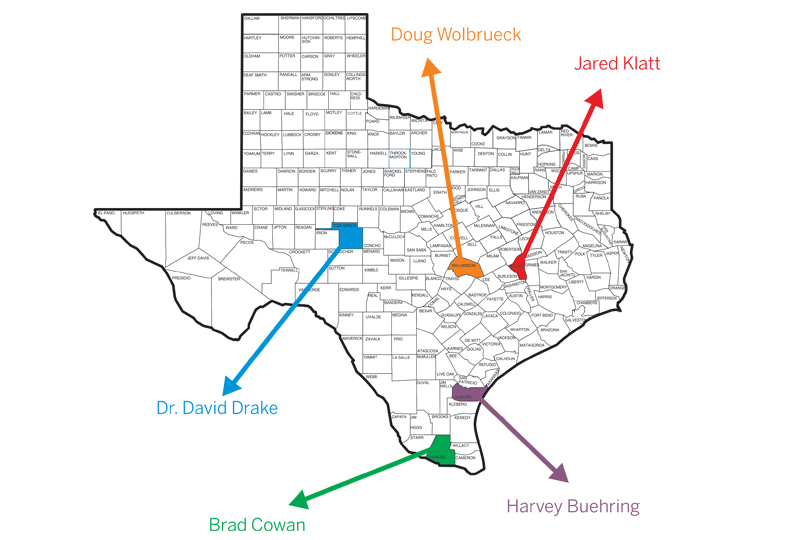By Jessica Domel
News Editor
Plows and planters are already rolling across parts of Texas. Although what goes in the ground may vary from area to area, two things remain true: low commodity prices and sugarcane aphids are weighing on farmers across the state.
In the Rio Grande Valley, farmers are busy planting corn, grain sorghum and cotton.
Although commodity prices for all three are low, Brad Cowan, Hidalgo County Farm Bureau member and county Extension agent, reports there will be an increase in cotton acreage in the Valley this year.
“Cotton is an expensive crop to grow. There’s been some really excellent cotton yields lately and growers are thinking they can make up a little bit on what they’re receiving for it by making outstanding yields,” Cowan said.
It’s been difficult for some farmers to decide what to plant, but most fields have enough moisture to get a crop going after planting thanks to a wet fall and winter.
“For the Valley overall, we haven’t run out of moisture yet,” Cowan said. “We’ve had some really dry weeks. Some of these fronts have been bringing some heavy, high winds and low humidity. It dries things out on top pretty quickly.”
Although drought-tolerant sesame has grown in popularity, there will be a limited number of acres planted in the Valley. The contract-based crop is limited this year as the supplier still has some of last year’s crop in storage.
But a lot of corn will be grown in the Valley, according to Cowan, because it’s predicted to be a wet year. And concerns of sugarcane aphids still remain, influencing planting decisions.
“Nobody knows, but everybody is preparing for bad sugarcane aphids this year,” Cowan said.
If the popular pesticide Transform is not granted a special waiver for use on sugarcane aphids, farmers worry they won’t be able to control the destructive pests with one pesticide, Sivanto, alone.
Sugarcane aphid concerns aren’t unique to the Valley, but span across the Lone Star State. In the Coastal Bend area, sorghum farmers are continuing to plant sorghum seeds, but remain leery of the pests.
“By and large, most of our growers have a pretty good management strategy in place for dealing with sugarcane aphids,” Harvey Buehring, former Extension agent and Farm Bureau Roundup reporter, said.
Buehring predicts Nueces and San Patricio counties will remain in the top four or five sorghum-producing counties in Texas this year.
Farmers in the Coastal Bend also are planting corn this time of year. In fact, because the winter was so mild, many farmers were able to start planting the first week of February instead of the second.
“We’re going to probably see a bit more corn. That will probably fill some of the void. We had a spike the last two years in spring wheat production and that dropped off sharply with the decline in prices and the disappointing yields that occurred last year with disease problems,” Buehring said.
In the western part of the Coastal Bend, there’s typically 8,000-10,000 acres in sunflower production.
“There’s almost no sunflowers being offered this year because the contracts being offered were not very attractive,” Buehring said. “Corn is filling that acreage.”
Cotton seeds also are filling planters across the area as farmers are hoping to plant what they intended last year, but were unable to due to significant rainfall.
“A lot of the growers are certainly on edge that everything has to go right in order to get out of this year without a disaster because of the low prices,” Buehring said. “You’re going to have to have good yields to dollar out on cotton, but it does have some potential for penciling out, especially if they were able to lock in some of the prices before this most recent downturn in the cotton market.”
As a result of lower cotton prices, some who haven’t yet planted cotton are seeing a weaker market and may back out.
“They may go to the tried-and-true sorghum crop,” Buehring said.
But with sorghum planting again comes concerns regarding sugarcane aphids and the sticky mess the pests leave behind that can make harvesting difficult or impossible.
There is good news for the Coastal Bend. Buehring said the area still has good subsoil moisture this planting season.
Farmers could still use another rain, however.
Further north in Central T

